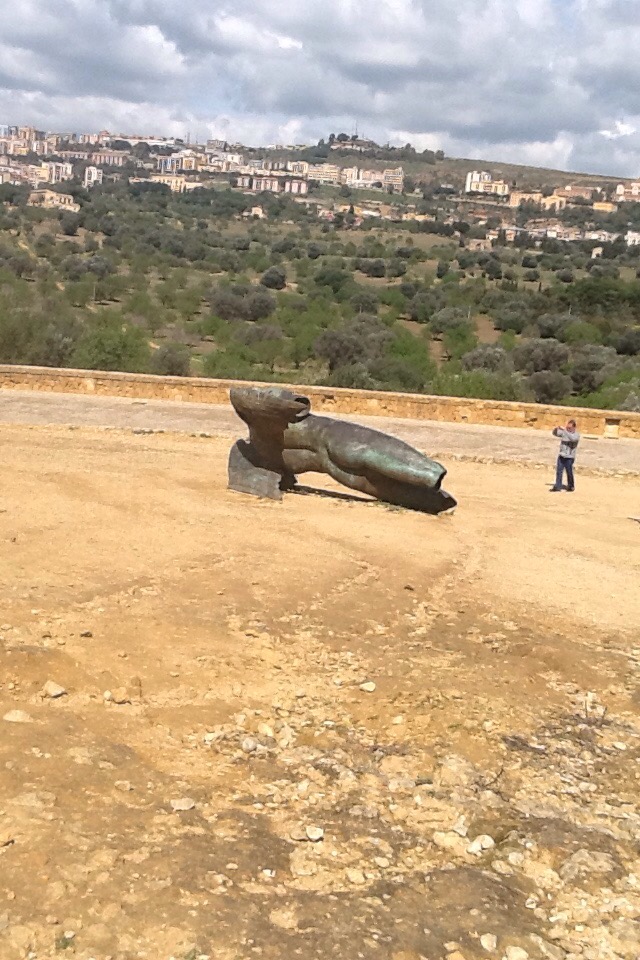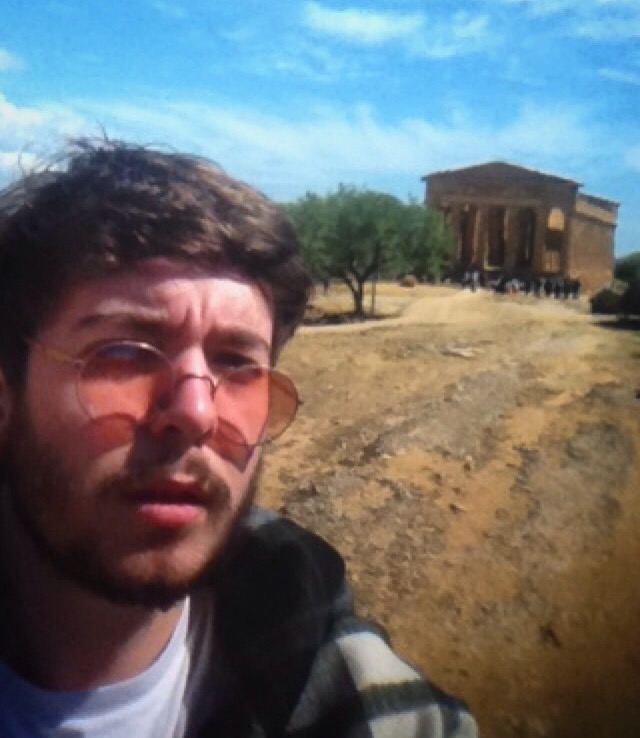
Day 6 meant one Dylan Johnson had the privilege of viewing UNESCO World Heritage’s poster-boy temple, the Temple of Concord. I viewed this architectural masterpiece while in a park in Agrigento that was filled with countless other ruins and wonders, like the grand, fallen temple statue below, but, just like UNESCO, I fell in love with Concord. Concord has a perfect 6:13 column ratio (as the ideal ratio is n:(2n+1), and it is among the most well-preserved temples of its kind (Corinthian).
The Temple of Concord, Agrigento
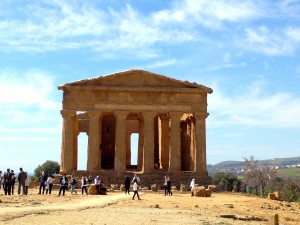
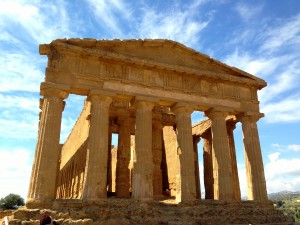
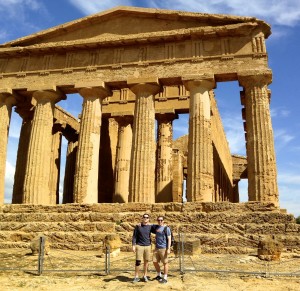
In Agrigento we toured the Valley of the Temples, where we encountered some of the most striking examples of Greek architecture. The term “valley” is a misnomer as the site is actually located atop a ridge that overlooks the city. Unlike the less than romantic nomenclature used in Selinunte (Temple A, B, C, etc), in Agrigento the writings of Cicero have informed our identification of the various temples. One of the most impressive buildings is the exemplary Temple of Concord, whose façade prominently features as the UNESCO logo. While it is unclear what exact Greek deity the temple was dedicated to, Concord is uniquely a Roman concept and celebrated the unity after a political battle or dispute. The Temple of Concord is exceptional with respect to its condition, and actually is the most well preserved temple in the entire Greek world! The unparalleled preservation of the building is contributed to the temple’s transformation into a Christian church. Some alterations that were made to the structure from this conversion, such as the spaces between the columns of the interior colonnade being filled in, are visible today. Altogether though, the Temple of Concord is the best specimen of an Ancient Greek Doric temple.
Noto and the Use of the Orders
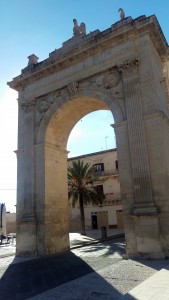
All of the classical temples that we saw on our trip across the island were of the Doric order. Only in the remaining two columns of the Roman amphitheater in Catania did we even see any use of the Ionic in a classical structure. However, much of the later architecture (medieval, baroque, and neoclassical) that we saw in the cities and towns often employed the Ionic, Corinthian, or a modified Doric. When we visited Noto, I became very curious as to why such styles would spring up without having much apparent precedent in previous Greek Sicilian monuments. It seems that the styles, instead of evolving in Sicily along with the rest of the formerly Greco-Roman world, were αimported from elsewhere in Europe. It is given that the many peoples who dominated the island at one time or another brought with them their own aesthetics, including of architecture, but this constant domination denied, to some extent, the development of a uniquely Sicilian architecture.
To explain it another way, the various architectural movements mentioned above were defined by certain by certain characteristics that the orders embodied. For example, the baroque was all about being showy and grand, so the solid and monumental Doric was probably less appropriate than the Ionic or Corinthian. Additionally, medieval architecture was all about achieving height and light, and the thick, imposing Doric columns might have counteracted this effect. Whichever way we explain it, the lack of standard Doric columns in later architecture reveals the extent of Sicily’s cultural domination in its obedience to standards and its apparent inability to develop a style of its own after the time of the Normans, despite the many cultures represented there.
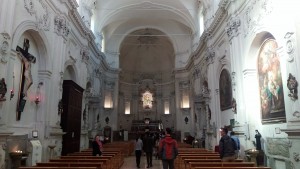
The Olympieum and the Telemones
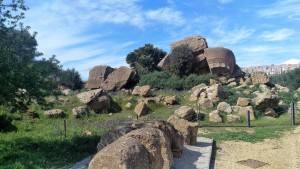
We learned in the Valley of the Temples in Agrigento that the Temple of Olympian Zeus there was extremely unique in Sicily and the larger Greek world. Of the Doric order, the temple itself would have been enormous if completed, measuring fourteen columns long by seven columns wide. This would have made it the largest Doric temple ever built. The monstrous monument likely commemorated the victory of Akragas (Agrigento) over Carthage in the battle of Himera (~480 BC), which definitely would have been a great accomplishment for the comparatively small city and its allies. Returning to the details of the temple itself, the odd width in columns would have been extremely uncommon since it would have caused there to be two separate entrances. Additionally, unlike any other temple we saw on the trip, the columns were (supposed to be) engaged with a wall, presumably what would have formed the entrance or entrances in a more natural way.
We also learned about the telamones, or giants, which would have been extremely unusual features on a Greek temple. Other than in the case of caryatid columns, figures were not known to be incorporated into the temple façade in such a way. And for those of us who had read any of the Iliad, we immediately recognized the root τελαμων, -οντος in the name of Ajax’s father, the hero Telamon (Τελαμων). Professor Boyd explained that τελαμων means “bearing” or “enduring,” which helps to characterize Telamon and his lineage, especially Ajax, who is extremely strong (enduring) and nearly a giant himself. Ajax’s patronymic actually helps to define his character.
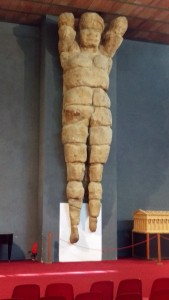
The Mosaic at Selinunte
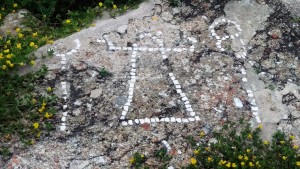
At the acropolis at Selinunte, we were able to see a mosaic of the Carthaginian goddess Tanit, who was in charge of fertility and, by extension, prosperity. This simple mosaic likely served as the entrance to somebody’s house, maybe the home of a Carthaginian merchant in Selinunte hoping to earn the goddess’ favor for his business. What might have been most interesting to us classicists as students of mythology is that Tanit was often conflated with goddesses from other religions, such as the Greek and Roman Juno and the Near Eastern Ishtar (Astarte in the Hellenic world). All three goddesses are roughly concerned with fertility, but the combination of them made it so that a) Hera or Juno presided over more than they were originally intended to, and b) people in the Greco-Roman world might not have really been worshipping their true deities all of the time, since both Tanit and Ishtar were more than just goddesses of fertility (as was Juno). Additionally, Ishtar, a goddess of sexuality, too, was also often combined with Venus. Therefore, when the religions came together, the lines between the Greek gods themselves could have become blurred.
- « Previous Page
- 1
- …
- 13
- 14
- 15
- 16
- 17
- …
- 26
- Next Page »
